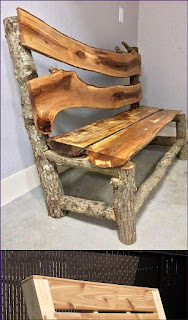Unleash Your Inner Craftsman: Cool Woodworking Plans for Unique Projects
Tired of the same old birdhouses and bookshelves? Ready to elevate your woodworking skills and create truly unique pieces? This article dives into a collection of cool woodworking plans that will ignite your creativity and challenge your abilities. We'll explore projects that range from functional masterpieces to stunning decorative accents, all designed to impress and inspire.
Geometric Wonders: Beyond the Box
Forget ordinary cubes and rectangles! Embrace the beauty of geometry with these exciting projects. Imagine crafting a stunning geometric bookshelf with interlocking triangular shelves, creating a visually captivating and surprisingly spacious storage solution. The complex angles demand precision, but the final result is a showstopper. Alternatively, consider building a tessellated wall art piece using various shapes and woods to create a mesmerizing three-dimensional mosaic. This project allows you to experiment with different stains and finishes, tailoring the piece to your personal style. Detailed plans can be found online, offering various levels of complexity to match your expertise.
Tips for Geometric Woodworking:
- Invest in high-quality woodworking tools, especially accurate measuring instruments and a sharp saw.
- Practice your cuts on scrap wood before tackling the final pieces.
- Utilize clamps to ensure tight joints and prevent warping during assembly.
Functional Art: Where Form Meets Function
These projects seamlessly blend aesthetics and practicality. Picture a custom-designed rolling kitchen island, complete with drawers, shelves, and a butcher block countertop. This is a project that demands meticulous planning and execution, but the reward is a stunning addition to your kitchen that reflects your personal style. For a smaller-scale challenge, create a set of uniquely shaped coat racks using reclaimed wood and eye-catching hardware. The possibilities are endless – from sleek modern designs to rustic farmhouse styles. Each rack becomes a miniature work of art, adding character to any entryway.
Choosing the Right Wood:
- Consider the intended use and durability needs when selecting wood.
- Explore various wood species for unique grain patterns and color variations.
- Reclaimed wood provides a sustainable and aesthetically pleasing alternative.
Whimsical Creations: Embracing Creativity
Let your imagination run wild with these fun and imaginative woodworking projects. Design a whimsical wooden mobile featuring intricately carved animals or abstract shapes. This project is perfect for showcasing your carving skills and adding a touch of playful charm to a child's room or any space needing a bit of whimsy. Alternatively, build a wooden puzzle box – a captivating challenge for both the creator and the recipient. The intricate design and hidden mechanisms offer a rewarding experience, demanding precision and attention to detail. These creative projects allow you to experiment with different techniques and personalize the finished product to perfectly match your vision.
Adding Personality:
- Incorporate unique finishes like paint, stain, or epoxy resin.
- Add decorative elements such as metal hardware, glass, or fabric.
- Personalize the project with engravings or custom lettering.
With the right plans and a dash of determination, you can transform ordinary wood into extraordinary creations. So, gather your tools, unleash your inner craftsman, and embark on a woodworking adventure that will leave you with unique, beautiful, and functional pieces you'll cherish for years to come.


























